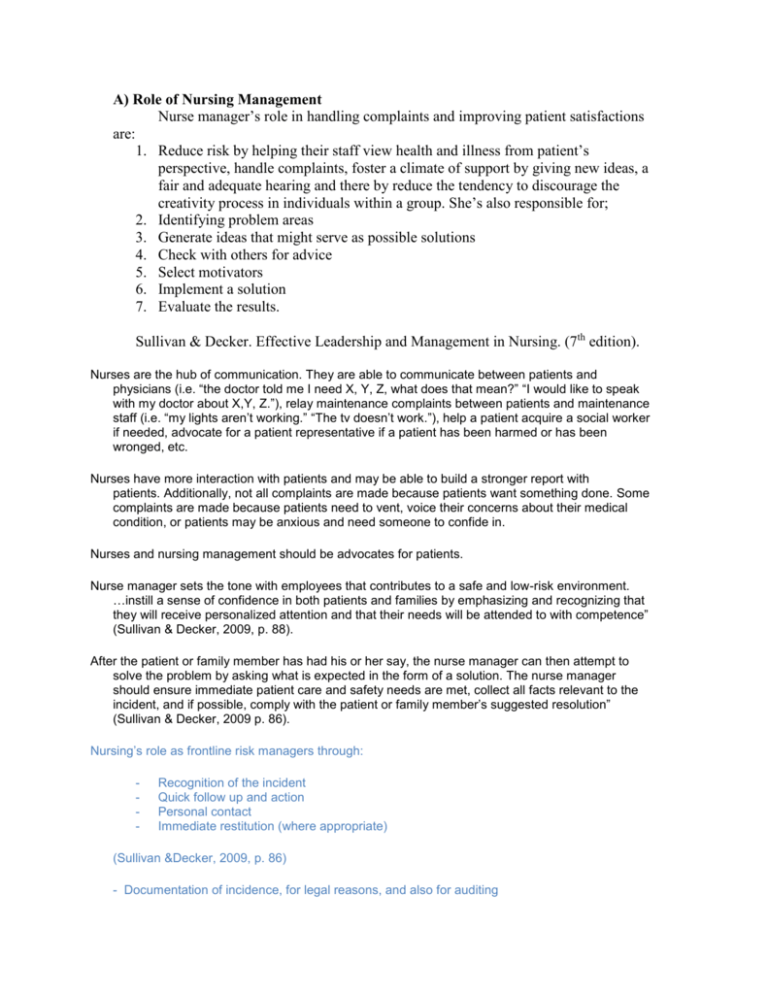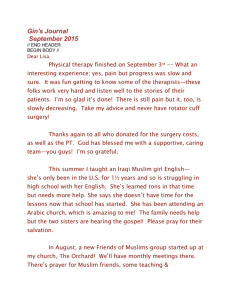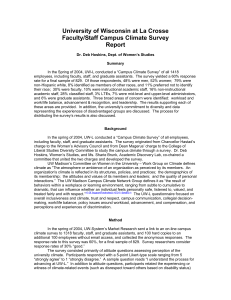
A) Role of Nursing Management
Nurse manager’s role in handling complaints and improving patient satisfactions
are:
1. Reduce risk by helping their staff view health and illness from patient’s
perspective, handle complaints, foster a climate of support by giving new ideas, a
fair and adequate hearing and there by reduce the tendency to discourage the
creativity process in individuals within a group. She’s also responsible for;
2. Identifying problem areas
3. Generate ideas that might serve as possible solutions
4. Check with others for advice
5. Select motivators
6. Implement a solution
7. Evaluate the results.
Sullivan & Decker. Effective Leadership and Management in Nursing. (7th edition).
Nurses are the hub of communication. They are able to communicate between patients and
physicians (i.e. “the doctor told me I need X, Y, Z, what does that mean?” “I would like to speak
with my doctor about X,Y, Z.”), relay maintenance complaints between patients and maintenance
staff (i.e. “my lights aren’t working.” “The tv doesn’t work.”), help a patient acquire a social worker
if needed, advocate for a patient representative if a patient has been harmed or has been
wronged, etc.
Nurses have more interaction with patients and may be able to build a stronger report with
patients. Additionally, not all complaints are made because patients want something done. Some
complaints are made because patients need to vent, voice their concerns about their medical
condition, or patients may be anxious and need someone to confide in.
Nurses and nursing management should be advocates for patients.
Nurse manager sets the tone with employees that contributes to a safe and low-risk environment.
…instill a sense of confidence in both patients and families by emphasizing and recognizing that
they will receive personalized attention and that their needs will be attended to with competence”
(Sullivan & Decker, 2009, p. 88).
After the patient or family member has had his or her say, the nurse manager can then attempt to
solve the problem by asking what is expected in the form of a solution. The nurse manager
should ensure immediate patient care and safety needs are met, collect all facts relevant to the
incident, and if possible, comply with the patient or family member’s suggested resolution”
(Sullivan & Decker, 2009 p. 86).
Nursing’s role as frontline risk managers through:
-
Recognition of the incident
Quick follow up and action
Personal contact
Immediate restitution (where appropriate)
(Sullivan &Decker, 2009, p. 86)
- Documentation of incidence, for legal reasons, and also for auditing
B) Causes of delay
From JPMA “ Determination of Delay in Turn Around Time (TAT) of Stat Tests
and its Causes: an AKAH Experience” (An article from Journal of Pakistan Medical
Association)
1) Machine break down
2) Delay in maintenance of analyzers
3) Over look of staff during shift change (Night shift to morning shift)
4) Computer shut down
5) Technical delays (difficulty with instrument, specimen delay, abnormal results
requiring verification, lab accidents & clerical delay which involves data entry
6) Delay in morning shift_ increase in workload at this time could well be a reason
for delay in TAT (Turn around time) at this time of the day
Bilwani, F & Vaqar, S. (2001). Determination of Delay in Turn Around Time
(TAT) of Stat Tests and its Causes: an AKUH Experience. Journal Of
Pakistan Medical Association (5), 126-172.
FISH BONE DIAGRAM
CAUSE
EQUIPMENT
Machine breakdown
Delay in Maintenance
Analyzer
Technical delays
Computer shut down
EFFECT
PEOPLE
Over look of technical staff
Shortage of highly trained
Personnel
MATERIAL
Failure in the process such as data entry
Verification process, analyses and recheck
Transmission of results to wards or in a hard
Copy, lab accidents, and clerical delay
METHOD
Analyses recheck due to
Accidents
Data entry
ALL THESE CONTRIBUTES TO WAIT TIME IN REPORTING LAB RESULTS
C) Possible people who could be in the quality and improvement team:
1. Nursing Staff
2. Physicians
3. Lab technicians
4. Nurse manager
D) (Based on IHI.org’s Quality Improvement 102 module, Lesson 2: Forming an
Effective Team, we will need a System Leadership, Clinical-Technical Expertise,
and a Day-to-Day Leadership)
E) Team Leader: Head physician or medical director of the ambulatory care center: to
oversee project and allocate resources
F) Technical Expert: nurse manager or the head or operations: someone who knows how
labs are drawn, who draws labs, the process of sending specimens to the Lab, the
process of receiving lab results, etc.
G) Also, perhaps the head lab Technician in the Lab who could explain the processes that
go on in the lab and the amount of time/effort it takes to determine lab results
H) Day-to-Day Leader: Charge nurse: to oversee the data being collected and to make sure
the research is being conducted accurately.
I) Additional Team Members: Someone (lab tech, ACP, CAN, etc.) who can speak
intelligently about how blood/specimens are collected, the time it takes to collect
samples, any obstacles that occur, potential errors that can occur which can cause a
delay in lab results (i.e. not ensuring that a urine specimen is a clean-catch specimen,
ways of contaminating a specimen, not getting enough blood for an accurate sample,
etc.). Also, a quality improvement specialist, staff nurses, secretaries (secretaries may be
useful if they are the ones who input lab orders. If the secretaries get behind in entering
the lab orders, then it could cause a delay in the lab because they won’t know what they
are testing for.)
J) I WAS THINKING WE COULD LOOK INTO WAYS TO IMPROVE
EQUIPMENT FAILURE, WHICH SEEMS TO BE A MAJOR CAUSE OF
DELAY IN THE TAT.
P_ PLAN
D_ DO
C_ CHECK
A_ ACT
SORRY GUYS I COULDN’T COME OUT WITH ANY IDEAS IN SECTION
D.
K) Creativity generates brand new ideas and solutions to problems as well as guiding
decision-making. Ways to improve creativity are:
1) Make a commitment to creativity
2) Believe that there are many solutions to any change
3) In every process make room for creativity
4) Use inquiry questions, how can we do this differently
5) Take notes vigorously
6) Constantly feed curiosity
7) Recognize risks as a viable option
8) Construct creative down time
9) Find a way everyday to be creative and have fun
10) Expect success.
http://www.selfgrowth.com/articles/Ranol 11.html
Allow an open forum for staff to discuss their ideas about work flow.
Provide a suggestion box
Encourage staff to be informed about EBP and to share articles or new information
is the ability to develop and implement new and better solutions. Creativity demands a certain amount
of exposure to outside contacts, receptiveness to new and seemingly strange ideas, a certain
amount of freedom, and some permissive management. …When staff are afraid of the
consequences of failure, their creativity is inhibited and innovation does not take place. ..Nurse
manager can foster a climate of support by giving new ideas a fair and adequate hearing, and
thereby reduce the tendency to discourage the creative process in individuals and within groups”
(Sullivan & Decker, 2009, p.106 – 107).
Provide an environment that is focused on fixing systems and not on criticizing employees.
Sullivan, E.J. & Decker, P.J. (2009). Effective Leadership and Management in Nursing.
Upper Saddle River, NJ; Pearson Prentice Hall
NIH ideas related to creating ideas for change:
Critical thinking about the current system*
Benchmarking: comparing to a standard
Using technology*
Creative thinking
Using change concepts
QI 102: The Model for Improvement: Your Engine for Change, Lesson 4: Developing Changes p. 2
Improve creativity by looking at the problem through the lenses of change concepts:
change concept is a general notion or approach to change that has been found to be useful in developing
specific ideas for changes that lead to improvement. Creatively combining these change concepts with
knowledge about specific subjects can help generate ideas for tests of change.
1) Eliminate Waste—Can you think of an activity or resource that doesn’t add value?
2) Improve Work Flow—Is there some aspect of your processes where the work doesn’t happen as
smoothly as it should?
3) Optimize Inventory—Do you have too much or too little of the items you use or provide? Is your work
held up because items are poorly organized or not available?
4) Change the Work Environment—Changing the work environment itself can make all other process
changes more effective. Does the culture resist or embrace new ideas?
5) Producer/Customer Interface—What are the needs of the people you serve? Do they understand the
value of your services? Do they have ideas for ways you can improve?
6) Manage Time—Can you cut down on the time it takes to do anything in the organization—whether it’s
waiting times or the time to develop a new idea or product?
7) Focus on Variation—What aspects of your systems vary and make your outcomes unpredictable?
8) Focus on Error Proofing—Can you make it harder for people in your system to make mistakes? For
instance, can you make the information necessary to perform a task available in, say, a checklist—rather
than in one’s memory?
9) Focus on the Product or Service—Is the service or product you prov
QI 102: The Model for Improvement: Your Engine for Change, Lesson 4: Developing Changes, p. 3
Back in college I took Operational Management courses, I still have a textbook and I
thought I would offer some more info on W. Edward Deming (Total Quality
Management):
“W. Edward Deming was one of the founders of the quality management movement. His
’14 points’ of quality emphasized a holistic approach to management that demands
intimate understanding of the process – the delicate interaction of materials, machines,
and people that determines productivity, quality, and competitive advantage:
<!--[if !supportLists]-->1. <!--[endif]-->Create constancy of purpose – strive for long-term improvement
rather than short-term profit
<!--[if !supportLists]-->2. <!--[endif]-->Adopt the new philosophy – don’t tolerate delays and mistakes
<!--[if !supportLists]-->3. <!--[endif]-->Cease dependence on mass inspection – build quality into the
process on the front end.
<!--[if !supportLists]-->4. <!--[endif]-->End the practice of awarding business on price tag alone – build
long-term relationships
<!--[if !supportLists]-->5. <!--[endif]-->Improve constantly and forever the system of production and
service – at each stage.
<!--[if !supportLists]-->6. <!--[endif]-->Institute training and retraining – continual updating of methods
and thinking.
<!--[if !supportLists]-->7. <!--[endif]-->Institute leadership – provide resources needed for effectiveness
<!--[if !supportLists]-->8. <!--[endif]-->Drive out fear – people must believe it is safe to report problems
or ask for help
<!--[if !supportLists]-->9. <!--[endif]-->Break down barriers among departments – promote teamwork
<!--[if !supportLists]-->10. <!--[endif]-->Eliminate slogans, exhortations, and arbitrary targets – supply
methods, not buzzwords
<!--[if !supportLists]-->11. <!--[endif]-->Eliminate numerical quotas – they are contrary to the idea of
continuous improvement
<!--[if !supportLists]-->12. <!--[endif]-->Remove barriers to pride in workmanship – allow autonomy
and spontaneity.
<!--[if !supportLists]-->13. <!--[endif]-->Institute a vigorous program of education and retraining –
people are assets, not commodities
<!--[if !supportLists]-->14. <!--[endif]-->Take action to accomplish the transformation – provide a
structure that enables quality”
Garnand, J.J. (2004) Adding Value with Management. The McGraw-Hill Companies,
Inc., p.81-82






![procedure SumOfSubsets(A[0:n * 1],Sum,X[0:n])](http://s3.studylib.net/store/data/007635889_2-3e56f5cfefbd576d3b1ed785ac704b8b-300x300.png)

